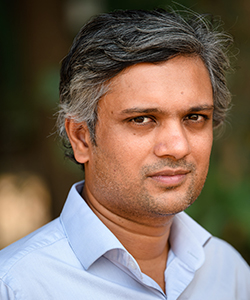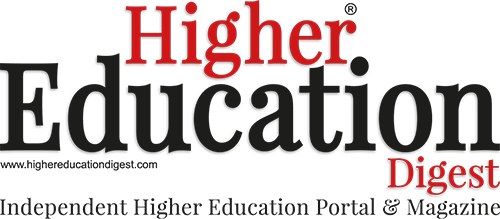Rohan Parikh has attained a BSc in Economics from Wharton Business School, an MBA from INSEAD, and has more than ten years of experience in the Real Estate and Hospitality industries. In 2013, Parikh entered the field of education by founding The Green Acres Academy in Chembur, Mumbai and simultaneously pursuing a Master’s degree in Education through Johns Hopkins University.
Every student has unique needs, but how can a teacher be expected to differentiate for 40 different students in a classroom? In order to answer a question like this, one has to explore the idea of introducing technology to support classroom teaching. Schools have quickly had to adapt to online classrooms to ensure there is no loss of learning for students. The blended learning approach ensures the use of technologies like personalised learning to be used by teachers and students and can improve not only the learning of students but also their productivity levels.
Take for example personalised learning programs in mathematics. In such a classroom, students are engaged in typical whole-group instruction for the first 15 minutes. Then the class is broken into two groups – one group works with the teacher to understand concepts using manipulatives, while the other group works independently on the personalised learning program using laptops. The program adapts the difficulty of challenges based on student performance – so, if students get answers correct then they get tougher problems and move ahead, while those who answer incorrectly are redirected to instructional videos and simpler tasks that ensure the students master the core ideas before moving on. Teachers are provided with real-time student performance data which shows how and where students are struggling and progressing, along with resources and strategies to use in subsequent lessons that allow for differentiated instruction based on student strengths and needs.
Information on each student is immediately available from such programs and thus allow teachers to differentiate students from a large group of students, with different learning needs, in the same course, or classroom. Students with similar requirements can then be grouped together for further instruction where needed. This ensures that no student is shooting too far ahead or lagging too far behind. Teachers now have the tools to identify and help each individual student in the exact area they need help.
In classes where such personalized learning programs have been used, it was found that the teaching-learning environment was more effective. The program was effectively able to identify where a student was falling short and provide instruction through a different method to help them out. And since each student learns differently, this proved effective for many students. Students were also provided help and assistance exactly at the point at which they needed it rather than falling behind and having to catch up later on. This ensures an improvement not only in student engagement but also in student performance. Teachers found that students in these classrooms were more physically and mentally present and were constantly engaged in the subject. Overall students showed significantly higher gains in math performance, despite being at the same level at the start of the year.
Blended learning using traditional classrooms mixed with technologies like personalised learning also ensure that students are learning new things, in an interesting and fun way. It replaces the mundane chalk-and-talk method with more interactive ways of learning which keep students excited, engaged and therefore interested in learning. In the long run, this also ensures that a student will no longer dislike a subject.
Additionally, blended learning approaches also ensure that the time teachers initially spent in providing in-classroom exams, and corrections are now taken away. The programs can give teachers immediate results and feedback, and the teachers time can be used effectively to analyse this data and assess the needs of each student, or the classroom as a whole. The teacher can now use her time to actually provide instruction to the students, thus making both teacher and student more productive.
In conclusion, while traditional teaching methods may have had their advantage, the truth is the approach to teaching needs to be reassessed. Blended learning can provide a customized approach to teaching and learning which was not possible earlier, thus making the use of teaching time and student learning more effective. And as we move forward, schools will have to look for more ways to implement blended learning to ensure the most effective outcomes from both student and teacher.
More About Rohan Parikh

He aims to provide affordable yet holistic, and well-rounded education by adapting the latest research in teaching and learning techniques within the Indian context. What started as one campus of The Green Acres Academy in Chembur, Mumbai, has grown to a total of 3 campuses across Mumbai and Pune, as well as the latest Seven Rivers International School (an IGCSE affiliate school).




